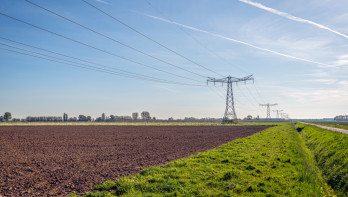Analysis Energy
Electricity market starts 2025 diffusely
The gas price briefly touched €50 this week, but then dropped back to the level of the beginning of the week. Gas reserves have not been consumed so quickly in seven years, but because there is no acute shortage, this high consumption has little impact on the price. Meanwhile, the electricity market shows a mixed picture.
The gas price rebounded this week after a significant increase. On Thursday, January 2, the gas price peaked at €50.27 per megawatt hour. By Tuesday, January 6, the price at the TTF had dropped to the lowest level of 2025. The gas price decreased by 4.2% to €48.17.
Weather remains the main short-term factor in the European gas market. At the beginning of January, temperatures are still on the high side, but this is likely to change soon. Considerably lower temperatures are expected in Northern Europe in the coming weeks. This led to prices above €50 in the middle of last week. Prices have since dropped significantly as the news has been processed and the realization has set in that shortages are unlikely this year.
Gas reserves declining sharply
However, the colder weather than we have been accustomed to in recent years is causing the reserves to deplete much faster. Due to the cold weather in Northern Europe, gas reserves have depleted at the fastest rate in seven years. Since the end of summer, gas reserves have decreased by over 25 percentage points, a situation not seen since 2018.
Yet, the significant decline in gas reserves does not impact the gas price. The reserves are not depleting fast enough to cause acute shortages. This does not mean that the situation does not pose risks. If the reserves continue to deplete at this pace, it may prove more difficult than in previous years to fill the reserves (almost) completely. This risk is far from averted. For now, gas reserves continue to decline more sharply than one would expect based on the long-term average.
LNG price continues to rise
Meanwhile, the LNG price increased slightly last week. The demand for LNG remains strong for this time of year due to the significant European gas demand. The fact that prices are somewhat contained is due to the increase in global supply. The United States, in particular, is bringing more and more liquefied gas to the market. In December, the US exported 4.5% more than in the same month of 2023. Total exports reached 8.5 million tons of LNG. The total export for the entire year amounted to 88.3 million tons, a 4.5% increase compared to the previous year. In 2023, exports amounted to 84.5 million tons.
Electricity price high, but drops significantly
Meanwhile, the electricity price fluctuated considerably this week. The electricity price was quite high in the first few days of the new year. On the first day of the year, the electricity prices were quite low. Between Thursday, January 2, and Sunday, January 4, the price was above €100 per megawatt hour. On Monday, January 6, the price dropped to €54.85.
Last week, a considerable amount of renewable energy was generated for this time of year. In total, 46.7% of all electricity was generated by solar and wind energy. Wind energy, in particular, dominated with a percentage of 43%. In practice, there were very strong winds on some days and calm winds on others. This led to significant peaks and valleys in the electricity market. The mild and sunny weather between January 2 and 4 caused a significant increase in the electricity price.
Due to the mild weather, little wind energy was generated, which was compensated on Thursday, January 2, by higher efficiency of solar panels. This resulted in a significant peak in renewable energy generation. However, such a peak only temporarily lowers prices at this time of year, as the number of sunny hours is low during this period. On Monday, January 6, a considerable amount of wind energy was generated. In the morning, the capacity remained around 10 gigawatts per 10 minutes, and in the afternoon, it dropped to around 7.7 gigawatts per 10 minutes. This put significant pressure on electricity prices.




